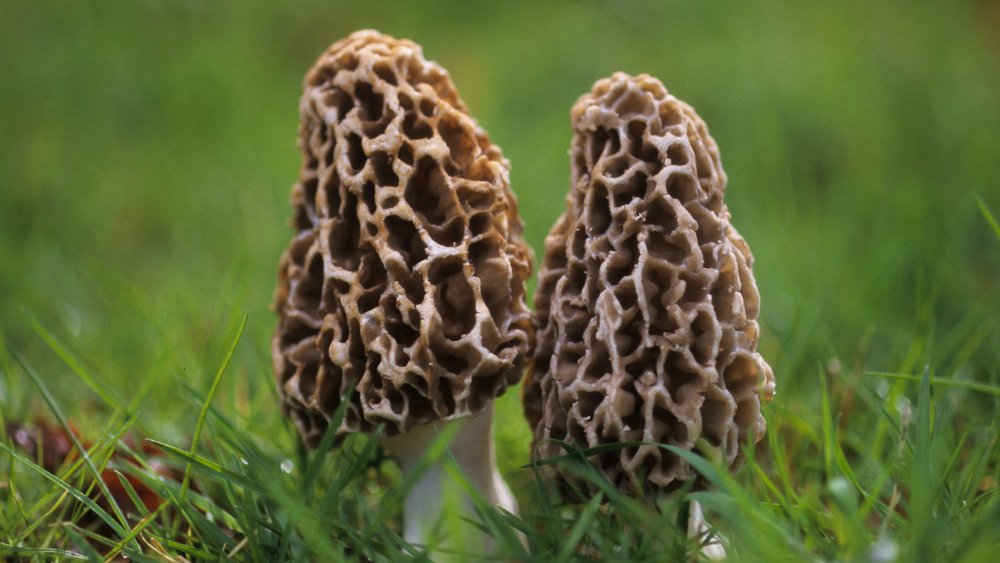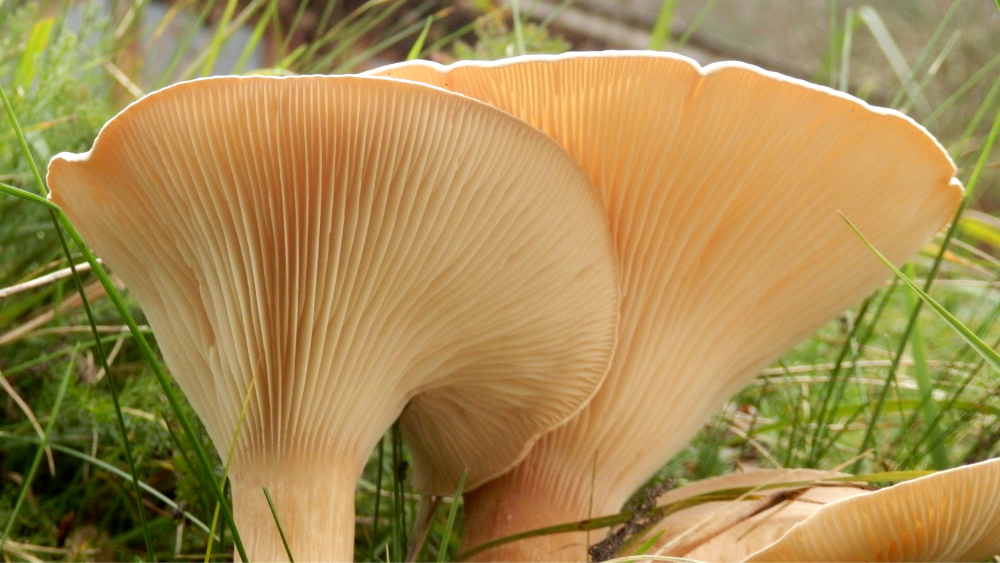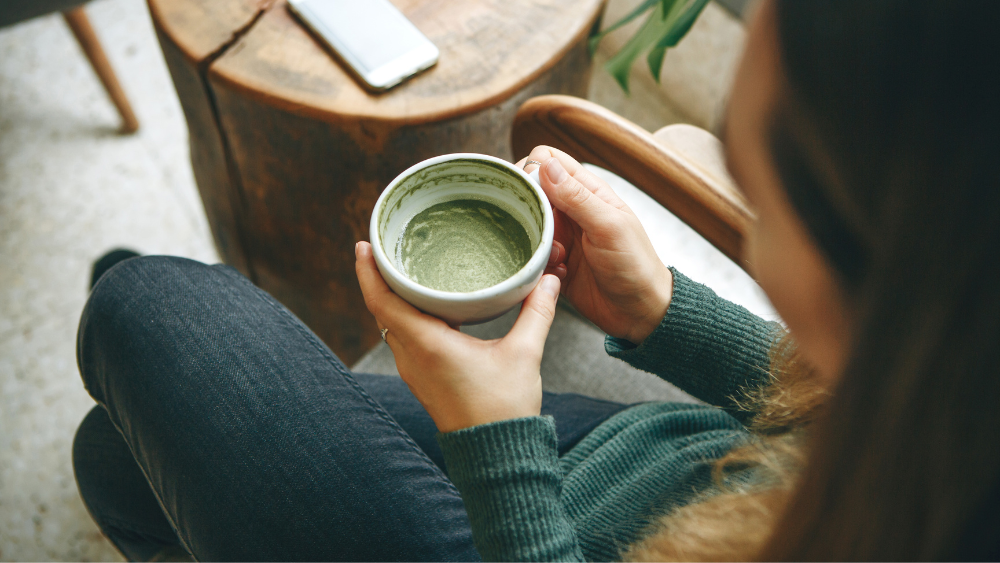September 12, 2024 | Dr. Silvana Jakupovic, ND
Morel mushrooms are prized wild mushrooms sought after by chefs and mushroom enthusiasts for their unique culinary uses. Unlike their cultivated counterparts commonly found in grocery stores, morels evade cultivation and thrive in the wild. This elusive nature contributes to their allure and high price tag. However, for many food connoisseurs, the uniquely earthy, nutty flavour and meaty texture of morels are well worth the pursuit. These flavourful fungi attract foragers eager to uncover their hidden treasures in woodlands across the Northern Hemisphere every spring.
The Unique Characteristics of Morels
Morels stand out from other mushroom varieties due to their unique honeycomb-like appearance. Their caps, ranging in colour from light cream to dark brown, are covered in a network of pits and ridges, resembling a honeycomb. This distinctive feature makes them easily recognizable in the wild.
In contrast to the smooth, uniform caps of many commercially available mushrooms, the texture of the morel's cap is irregular and often described as sponge-like. Morels emerge in early spring, typically from late March to May, depending on geographical location and weather conditions.
Their preference for cooler temperatures and moist environments makes them a fleeting delicacy, adding to their allure for mushroom hunters.
Varieties of Morel Mushrooms in Canada
Canada boasts a diverse range of morel mushrooms, adding excitement to the spring foraging season. Among the most common types are the yellow morels (Morchella esculenta) and the black morels (Morchella elata). Yellow morels, also known as common morels, are generally lighter in colour, ranging from cream to yellowish-brown.
On the other hand, black morels are distinguished by their darker, almost black, caps. While both types share a distinctive honeycomb appearance, size, shape, and colour variations exist even within these categories.

Health Benefits of Morel Mushrooms
Beyond their culinary appeal, morel mushrooms offer a surprising array of health benefits. These nutritional powerhouses pack significant vitamins, minerals, and antioxidants that contribute to overall well-being [1]. One of the most notable advantages is their remarkable vitamin D content, a nutrient often lacking in many diets.
Additionally, morels are a good source of iron and copper, which are essential for maintaining healthy red blood cells and various bodily functions.
Morels and Their Antioxidant Properties
In addition to their impressive vitamin and mineral content, morel mushrooms are also packed with antioxidants [1]. Antioxidants play a vital role in protecting our bodies from damage caused by harmful free radicals, which can contribute to chronic diseases such as heart disease and cancer.
Morels contain powerful antioxidants, such as selenium and zinc. Selenium supports the immune system and thyroid function, while zinc plays a crucial role in cell growth and repair. These properties make morels more than just a delicious treat; they offer valuable health benefits.
Identifying True Morels from False Ones
While morel hunting can be a rewarding experience, ensuring your safety by correctly identifying true morels from their toxic counterparts is crucial. False morels, though similar in appearance, can cause severe illness if ingested. True morels have a distinctive honeycomb cap with pits and ridges that extend down the stem.
The stem of a true morel is hollow, while false morels often have a solid or chambered stem. Another way to distinguish them is by cutting them open lengthwise. The interior of a true morel will be completely hollow, while a false morel will have a cottony or web-like substance inside.
When in doubt, it's always best to err on caution and consult experienced mushroom hunters before consuming any wild mushrooms. If you need clarification on the identity of a mushroom, leave it be.

Culinary Uses of Morel Mushrooms
Morel mushrooms are a prized ingredient in many dishes because of their culinary versatility. Their earthy, nutty flavour complements various cuisines and adds a touch of elegance to simple and gourmet meals. One of the most popular ways to enjoy morels is by sauteéing them in butter or olive oil, allowing their delicate flavour to shine through.
Their meaty texture also lends itself well to sauces, stews, and risottos, adding depth and complexity to these dishes.
Preparing Morels for Cooking
Before you begin cooking with your prized morels, proper cleaning is essential. Due to their porous texture, morels can harbour dirt, sand, and small insects hiding in the mushrooms' crevices. To clean them, start by gently rinsing them under cold running water. Avoid soaking them, as this can make them waterlogged and lose their flavour.
Instead, use a soft-bristled brush or your fingers to gently remove debris from the surface. Once cleaned, pat the surface dry with a clean kitchen towel or paper towel.
Remember to trim any hard or woody parts from the stems before slicing or chopping as needed for your chosen recipe.
Simple and Gourmet Recipes Featuring Morels
The beauty of morel mushrooms lies in their versatility. Here are a few culinary ideas to showcase their unique flavour:
Sautéed Morels with Herbs: Sauté morels in olive oil with garlic, shallots, and fresh herbs such as thyme or parsley until tender and golden brown. Serve as a simple side dish or over grilled fish or steak.
Creamy Morel Pasta: Slice morels and add them to a creamy sauce made with white wine, butter, and Parmesan cheese. Toss with your favourite pasta, such as fettuccine or pappardelle, for an elegant and satisfying meal.
Morel and Asparagus Risotto: Combine the earthy flavours of morels with fresh asparagus in a creamy risotto. Sauté chopped morels and asparagus spears with onions and garlic, then cook in Arborio rice and broth until creamy and tender.
Morel mushrooms are a culinary delight and offer various health benefits due to their unique nutritional profile and antioxidant properties. Foraging for morels can be a rewarding experience, especially in Canada, where they are abundantly found during specific times and in certain regions. By understanding how to identify true Morels, prepare them for cooking, and preserve them correctly, you can fully enjoy their earthy flavour in various dishes. Whether used in simple recipes or gourmet creations, Morel mushrooms add a distinct taste worth exploring for any food enthusiast.

Frequently Asked Questions
Can you eat morel mushrooms raw?
Consuming raw morels is not recommended. They contain a compound called hydrazine, which can cause stomach upset. Cooking morels thoroughly in a skillet over medium heat for about 5-7 minutes until they reach the desired tenderness helps to break down this compound, making them safe and enjoyable to consume.
What does morel taste like?
Morels are celebrated for their distinctive earthy and nutty flavour profile, often likened to a more delicate version of wild mushrooms. Their taste is often described as woodsy, with subtle smoky notes. This unique flavour profile makes morels a highly sought-after ingredient among chefs and mushroom enthusiasts, elevating them to gourmet status.
Why do you cut morel mushrooms before cooking?
Cutting morel mushrooms before cooking serves several purposes. First and foremost, it allows for thorough cleaning, as dirt, critters, and excess debris can accumulate in the crevices of the mushrooms. This step is essential for ensuring your morels are free from unwanted elements. Cutting them also helps them cook more evenly, especially for large morels that might cook unevenly if left whole.









Leave a comment
This site is protected by hCaptcha and the hCaptcha Privacy Policy and Terms of Service apply.